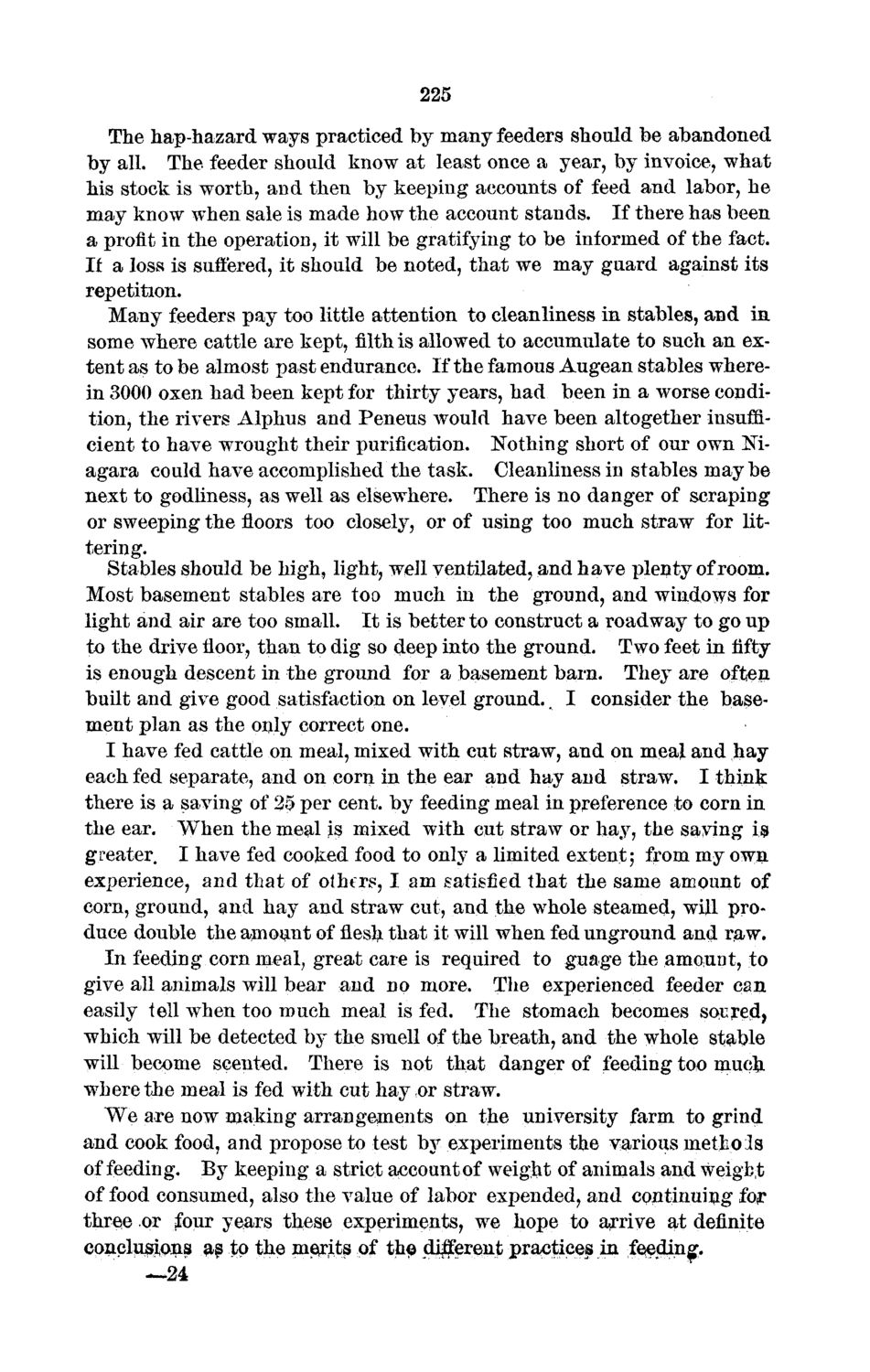| |
| |
Caption: Board of Trustees Minutes - 1872
This is a reduced-resolution page image for fast online browsing.

EXTRACTED TEXT FROM PAGE:
225 The nap-hazard ways practiced by many feeders should be abandoned by all. The feeder should know at least once a year, by invoice, what his stock is worth, and then by keeping accounts of feed and labor, he may know when sale is made how the account stands. If there has been a profit in the operation, it will be gratifying to be informed of the fact. If a loss is suffered, it should be noted, that we may guard against its repetition. Many feeders pay too little attention to cleanliness in stables, and in some where cattle are kept, filth is allowed to accumulate to such an extent as to be almost past endurance. If the famous Augean stables wherein 3000 oxen had been kept for thirty years, had been in a worse condition, the rivers Alphus and Peneus would have been altogether insufficient to have wrought their purification. Nothing short of our own Niagara could have accomplished the task. Cleanliness in stables maybe next to godliness, as well as elsewhere. There is no danger of scraping or sweeping the floors too closely, or of using too much straw for littering. Stables should be high, light, well ventilated, and have plenty of room. Most basement stables are too much in the ground, and windows for light and air are too small. It is better to construct a roadway to go up to the driye floor, than to dig so deep into the ground. Two feet in fifty is enough descent in the ground for a basement barn. They are often built and give good satisfaction on level ground.. I consider the basement plan as the only correct one. I have fed cattle on meal, mixed with cut straw, and on meal and hay each fed separate, and on corn in the ear and hay and straw. I think there is a saving of 25 per cent, by feeding meal in preference to corn in the ear. When the meal is mixed with cut straw or hay, the saying is greater. I have fed cooked food to only a limited extent; from my own. experience, and that of others, I am satisfied that the same amount of corn, ground, and hay and straw cut, and the whole steamed, will produce double the amount of flesh that it will when fed unground and raw. In feeding corn meal, great care is required to guage the amount, to give all animals will bear and no more. The experienced feeder can easily tell when too much meal is fed. The stomach becomes soured, which will be detected by the smell of the breath, and the whole stable will become scented. There is not that danger of feeding too much, where the meal is fed with cut hay or straw. We are now making arrangements on the university farm to grind and cook food, and propose to test by experiments the various methols of feeding. By keeping a strict account of weight of animals and weight of food consumed, also the value of labor expended, and continuing for three or four years these experiments, we hope to arrive at definite conclusions af to the merits of the different practices in feeding. —24 ' ' ~
| |